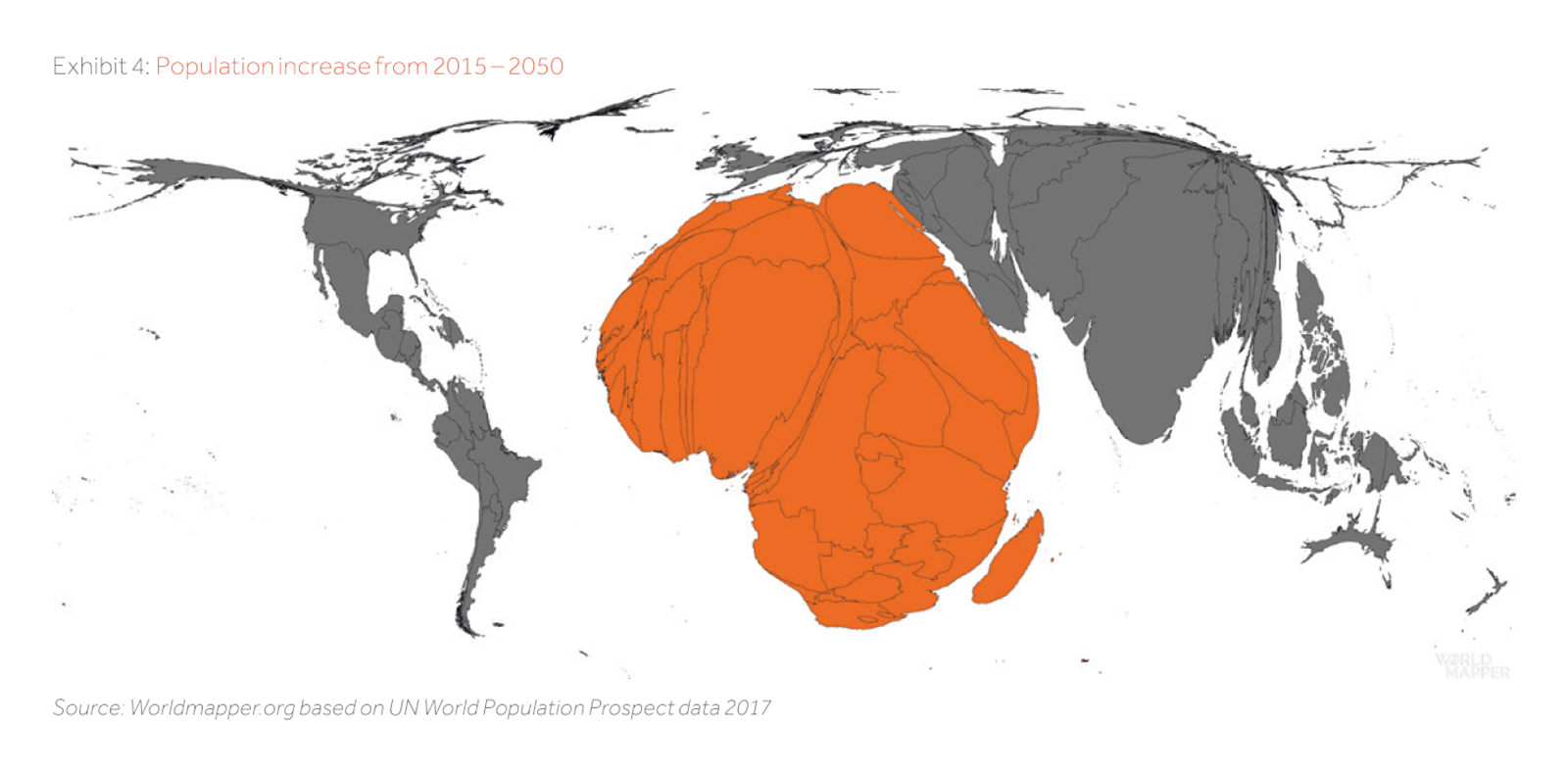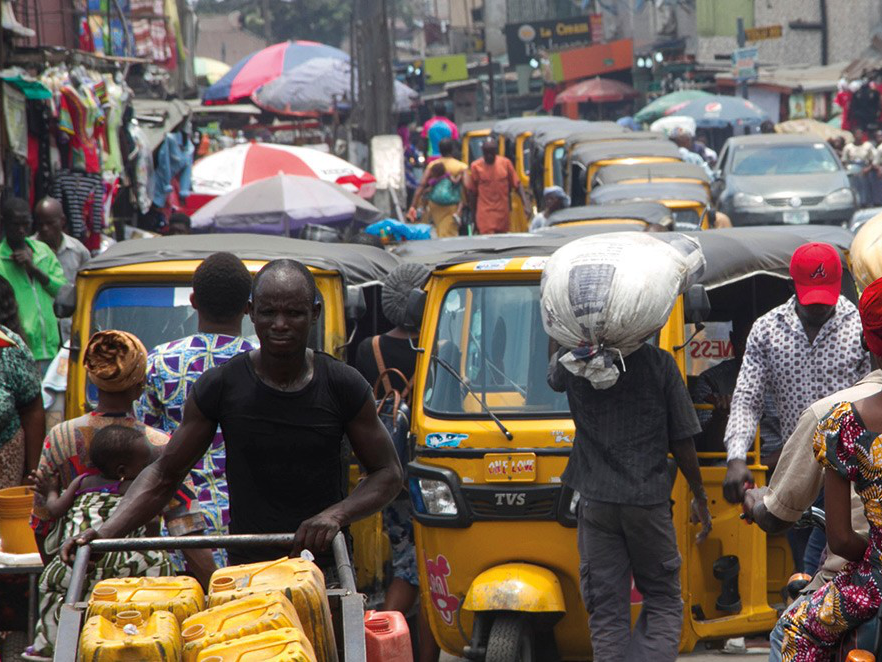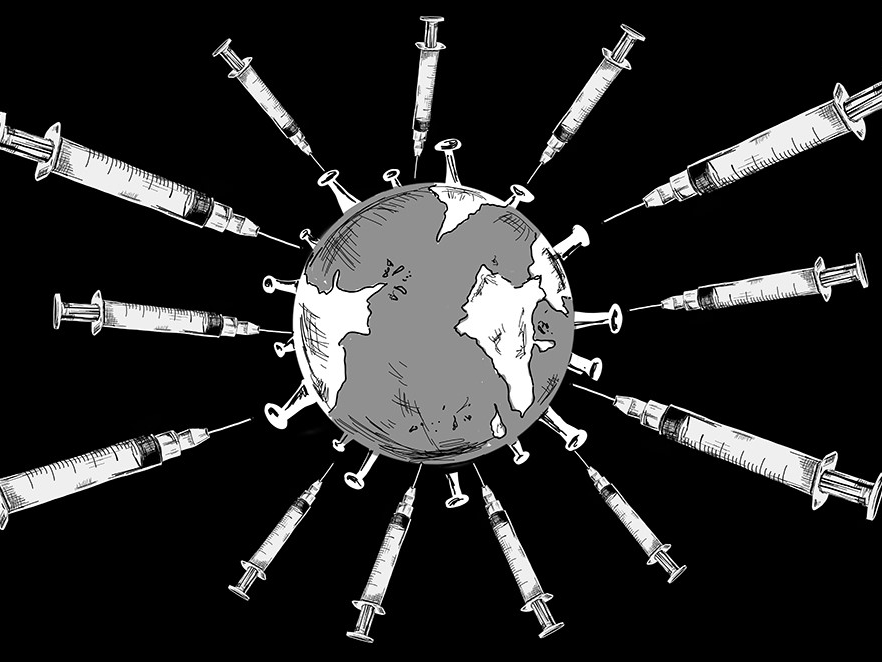There are more people in the world than ever before, but population growth is far from even and Africa is going to add another billion or so over the next 20 to 30 years…
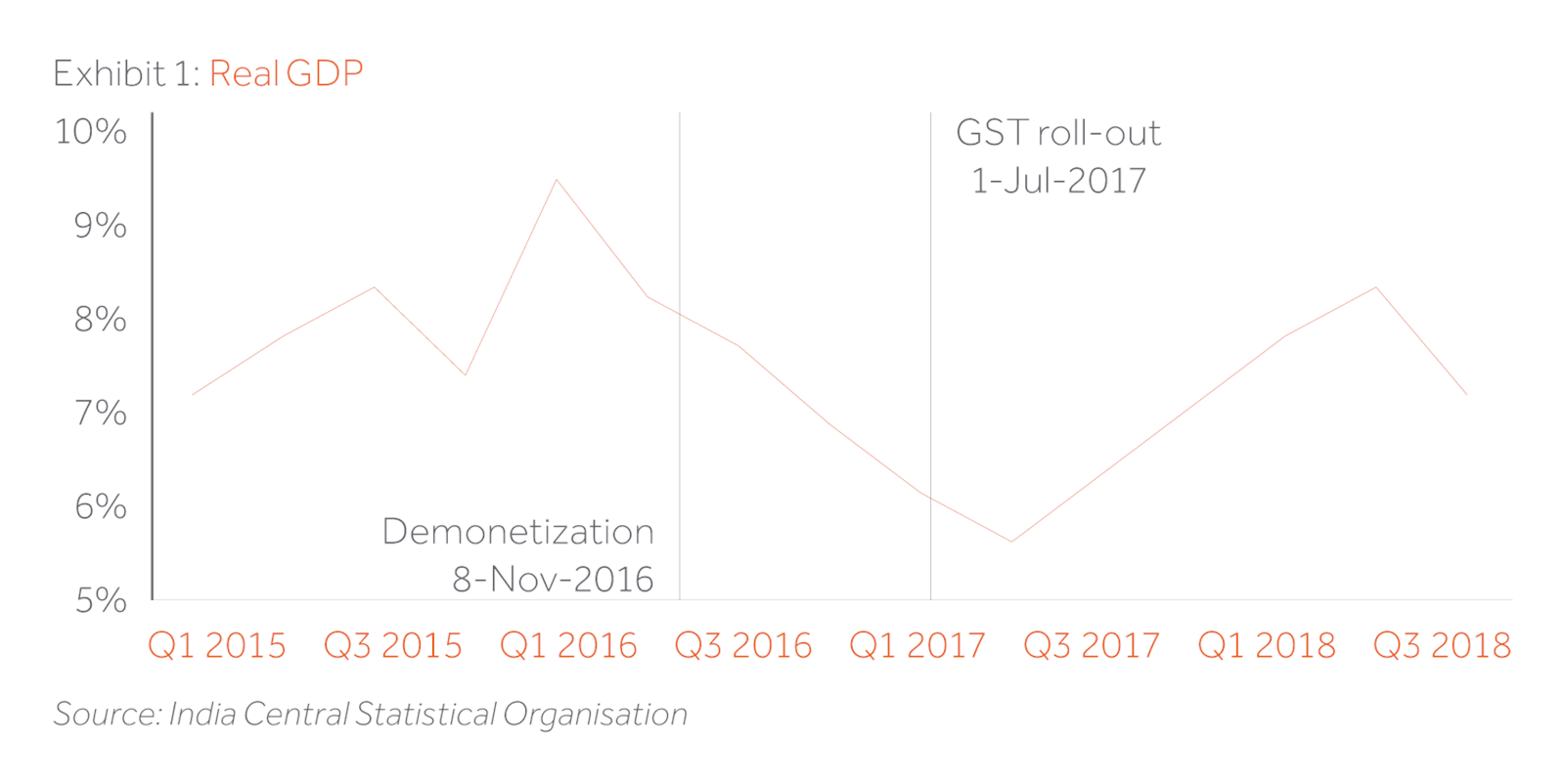
This dramatic increase in population will be dominated by the African continent. While population growth slows in the rest of the world, it continues to rise in Africa.
– More than half the additional 2.2 billion people that will be added to the world population by 2050 will be in Africa and most of them within its poorest regions.
– The UN’s base case is that the number of Africans will double in 30 years to 2bn and at least double again, to 4bn, by the turn of the century.
– In just 30 years the US will be overtaken by Nigeria to become the world’s third most populated country behind India and China.
– By the end of the 2100 century, the 4bn living in Africa will be making up 36% of the total word population.
– In Nigeria alone, there are more babies born every year than in the whole of Western Europe.
It is not just absolute numbers that are important but also the age profile of different continents.
– The median age in Sub-Saharan Africa is 19.5. That compares with 38 in the US, 43 in the EU and 47 in Japan.
– In 1960, roughly one in ten of the world’s population was African. By the end of the century that should be more than one in three. Drivers of population change in Africa The dynamics at play are straightforward
– Since 1950, improvements in public health have led to an inspiring decrease in infant and child mortality rates.
– Overall life expectancy has also risen. Africans born in 1955 could expect to live only until the age of 37, encouragingly, Africans born in 2018 can expect to live to the age of 60.
– Meanwhile, another key demographic variable defined as the number of children the average African woman is likely to have in her lifetime, (total fertility rate) remains elevated compared to global rates.
– The total fertility rate of Africa is 88% higher than the world standard (2.5 children per woman globally versus 4.7 children per woman in Africa).
Is the demographic boom an opportunity or a risk for Africa? Failure to address Africa’s rising population is not an option and if nothing is done the probable effects on food and water security will be dramatic. Success-consistent and dependable growth per capita profoundly alters today’s global investment and economic landscapes.
Population trends will fundamentally shape Africa’s future development prospects and the continent has space to accommodate more people, so why do investors worry about its demographic boom?
Younger populations should grow faster than ageing societies. But the “demographic dividend” (rapid acceleration in economic growth due to demographic factors) depends, in particular on human, financial and capital deepening. This is particularly true for real growth per capita.
Africa today has the second largest population after Asia and it is far less dense than Europe. But investors believe Africa doesn’t have the infrastructure to handle its demographic boom. In Nigeria, the national population commission said this massive demographic boom puts a severe strain on the country to provide enough schools and health facilities. Low incomes tend to equal a limited fiscal base and an inability to self-finance the necessary investment for long term sustainable growth.
Delivering the demographic dividend – a road map.
In many cases, extremely rapid population growth can compound poverty and a lack of economic opportunities. Many African governments do not currently invest adequately in education and training (human capital) or infrastructure and institutional progress (physical capital and struggle to create jobs for a growing workforce. Unless they do in the future, Africa’s demographic boom story will be a tale of missed opportunities.
The challenge is to create jobs and growth in countries with younger populations, that will require significant investment in social services such as health and education as well as infrastructure and business.
A general investment in improving education at all levels will both reduce fertility rates and improve the quality of Africa’s growing labour pool.
There will be no demographic dividend without job creation. According to the International Monetary Fund, between 18m and 20m new jobs will be needed annually over the next 25 years on the continent. If these trends are extrapolated until 2050, the new jobs required would be almost equivalent to the entire European population. The prerequisites to meet this huge challenge are education and better healthcare, followed by investment based on stable economic and political conditions.
Investing in basic infrastructure such as the provision of clean water and improved sanitation to reduce infant and female mortality advances Africa’s demographic dividend. It is possible to speed up the demographic transition in Africa to create greater opportunities for economic growth and development. If fertility rates are reduced over the coming two decades, Africa could benefit from an earlier onset as well as a larger demographic dividend and, with the right policies, capitalize on it to boost growth and wellbeing.
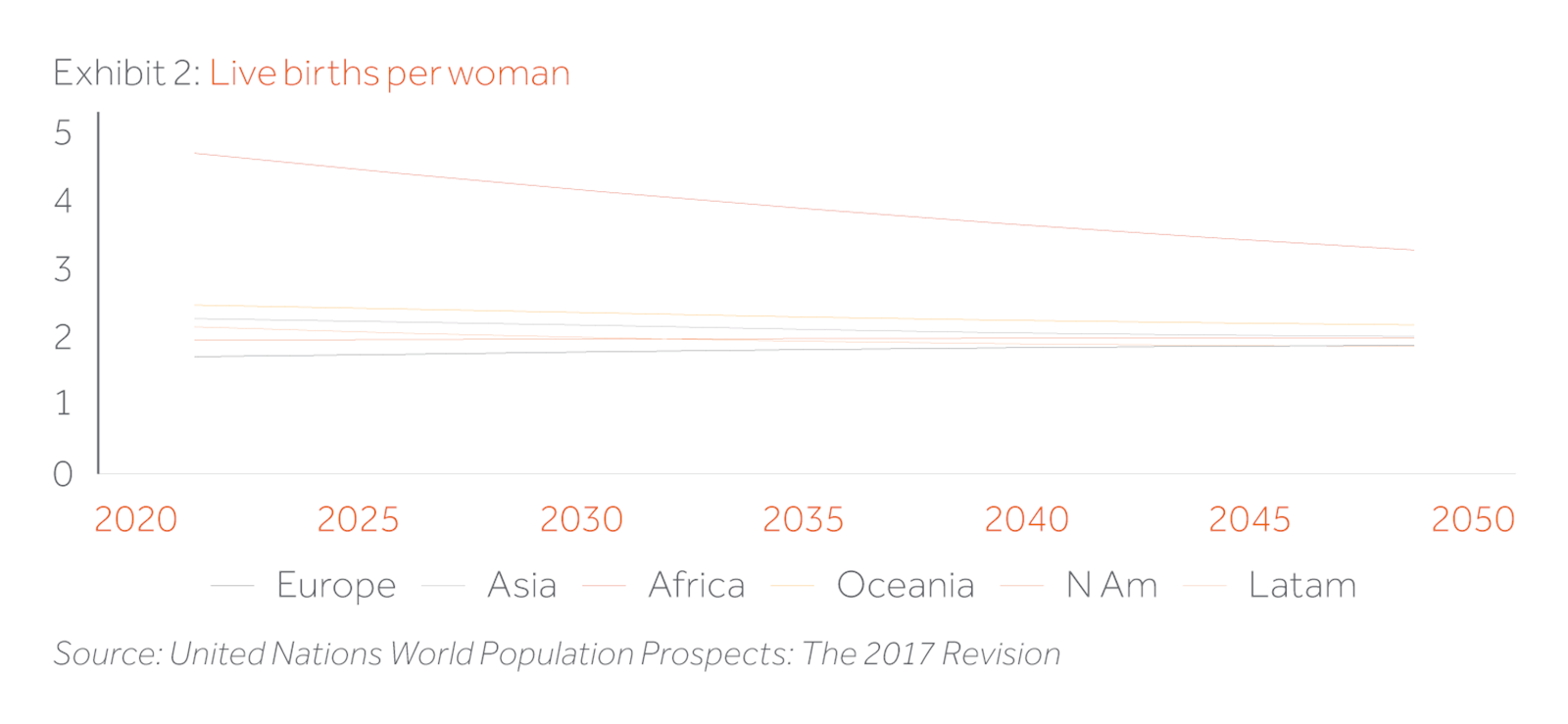
Political leadership in discussing gender inequality, fertility and family size is critical, as are public media campaigns that demonstrate the health and economic benefits of smaller families. The measures that can reduce fertility rates include improving secondary female education and putting in place family-planning initiatives, including increased availability of contraceptives. Countries in Africa need to eliminate gender inequality, particularly in education, and improving female enrolment and graduation rates relative to those of males at every level.
Key objectives should be to facilitate urban employment and poverty reduction, to decrease the proliferation of slums and to secure critical urban food, water and energy supplies. Furthermore, in the context of food security, Africa’s demographic boom will arguably have to run parallel to an agricultural revolution.
Africa holds 65% of the world’s arable land, could generously meet its own food requirements and, under the right policy interventions, could possibly feed the entire planet by 2050 according to the World Bank.
Which countries in Africa will enjoy a meaningful demographic dividend?
Africa’s population growth highlights the need for better employment opportunities.
Reduced fertility rates will help African’s governments to spend less on health and education, since there are fewer children in addition to reduced spending on basic infrastructure. These countries will be able to strategically invest these savings to improve productivity, invest in technology and eventually prepare for future shifts in demographics when the population start ageing.
Seen from an Asian perspective, Africa’s demographic potential is unparalleled. However, seizing the demographic dividend will be critical. If all those new people can find jobs and opportunity, global growth will gradually shift to Africa.
One example of opportunity arising from limited capital stock today is the potential for technology leapfrog.
Approximately 590 million Africans have no access to electricity because the continent’s enormous renewable energy potential remains essentially unexploited. This is a great opportunity to leapfrog old redundant energy infrastructures and introduce more flexible micro grid solutions.
For investors it is clear that Africa is undercapitalized, despite a growing FDI influx, Africa’s share of total world FDI volume remains small, at roughly 5%. This compares poorly to the continent’s 15% share of global population. Investing in Africa is a long-term play. In many places it’s the same as China was 30 years ago or India was 15 years ago. While the risks are high, Africa is positioned to be the next pillar of growth given demography, natural resources and urbanization potential. Its cities will be the catalysts and could present global investors with a starting point for accessing this long-term growth opportunity.
However, in order for demographic change to be lasting and sustainable, it has to be combined with four other developments: economic, technological, political and ecological.
The private sector has a role to play here-financing and delivering electricity through renewables and new technologies, education and healthcare services, payments systems and other financial deepening and physical infrastructure, and through investment stewardship enhanced the lasting value of these investments. Since 2004 for example Actis has completed a total of 70 transactions in the continent, committed US$3.3bn total capital and executed 39 exits. These investments did not depend on demographics but rather on deeper economic and financial conditions.
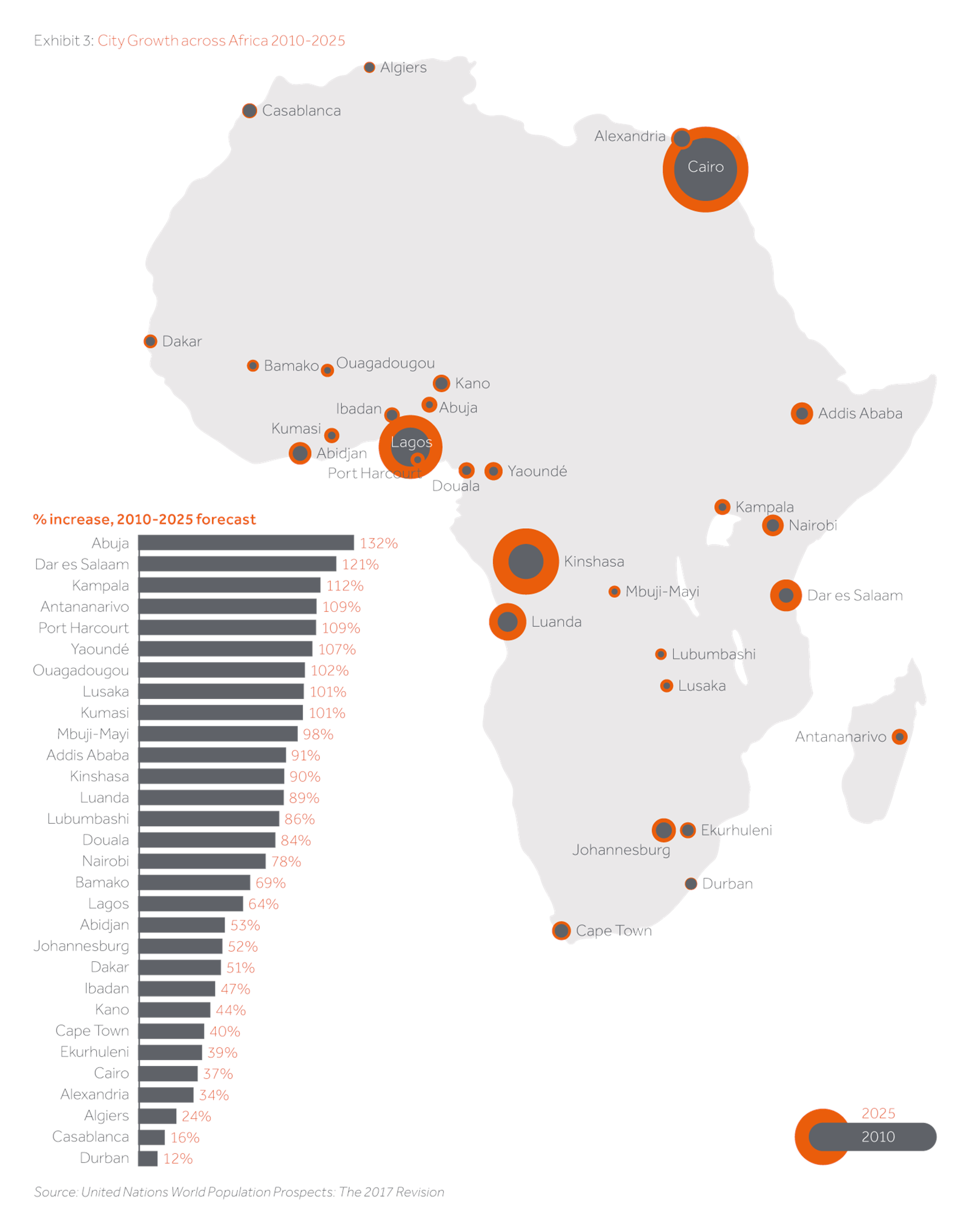
– Today, the population in Africa is already 1.2 billion and it will double over the next 35 years and reach 2.4 billion by 2050, despite the projected fertility decline (Exhibit 2: Live births per woman).
– The continent’s population will increase from some 229 million in 1950 to more than 2.4 billion people by 2050.
– Africa’s population has contributed 965 million to world population growth since 1950. However, over the next 35 years Africa’s population will most likely contribute about 1.4 billion people.
– Between 2015 and 2050, the world population will increase by almost 2.4 billion people. More than 56% of this increase will be in Africa (112%) and Asia (35%).
– Latin America and the Caribbean will only contribute some 6.2% to this world population increase and Northern America just 3.3%.
– Europe and Oceania will have a negative balance of -0.3% with Europe losing 25 million of its total population.
– The enormous increase of the world population from 7.4 billion in 2015 to most likely 9.8 billion by 2050 will essentially happen in Africa and Asia.
